Pay attention to how heat affects ingredients from "summary" of Salt, Fat, Acid, Heat by Samin Nosrat
When we cook, we must remember that heat is a powerful force that can transform ingredients in various ways. It can bring out new flavors, textures, and aromas, but it can also destroy or ruin them. Different ingredients react differently to heat, so it's crucial to pay attention to how they behave when exposed to heat. For example, vegetables contain natural sugars that caramelize when they are roasted, creating a sweet and savory flavor. On the other hand, proteins like meat and fish can become tough and dry if they are overcooked. By understanding how heat affects different ingredients, we can adjust our cooking techniques to achieve the desired results. Another important factor to consider is the cooking method used. For instance, grilling imparts a smoky flavor to food, while braising allows ingredients to simmer slowly in their own juices, resulting in tender and flavorful dishes. By choosing the right cooking method and applying the appropriate amount of heat, we can enhance the natural qualities of the ingredients we are working with. It's also essential to consider the temperature at which ingredients are cooked. High heat can create a crisp exterior on foods like fried chicken, while low heat can gently cook delicate ingredients like eggs. By controlling the temperature during cooking, we can ensure that our dishes turn out perfectly cooked and delicious.- By paying attention to how heat affects ingredients, we can elevate our cooking and create amazing dishes that are full of flavor and texture. Whether we are roasting vegetables, searing meat, or baking bread, understanding how heat influences ingredients is essential for achieving culinary success.
Similar Posts
Building confidence takes time
As you embark on your journey to learn a new skill or pursue a new passion, it's important to remember that confidence is not s...
Cultivating a garden full of life
The act of tending to a garden is akin to nurturing life itself. It requires patience, dedication, and a deep connection to the...
Adopting a plantbased diet can decrease risk of chronic disease
By adopting a plant-based diet, you are taking a significant step towards reducing your risk of chronic diseases. When you cons...
Green leafy vegetables are packed with antiinflammatory antioxidants
Green leafy vegetables are like a superhero when it comes to fighting inflammation in the body. These veggies are not only rich...
Detoxifying foods aid in cleansing the body
Detoxifying foods are essential for helping the body remove accumulated wastes and toxins. These foods assist in the cleansing ...

Small farms promote biodiversity
Small farms, with their patchwork of diverse crops and animals, have long been recognized as bastions of biodiversity. In contr...
Cultural traditions are passed down through generations
In my family, cultural traditions were more than just practices we observed; they were the essence of who we were. Passed down ...
The dangers of artificial sweeteners
Artificial sweeteners have long been marketed as a healthier alternative to sugar, promising zero calories and a sweet taste wi...
Colorful illustrations
The illustrations in this cookbook are bright, bold, and full of personality. They bring each recipe to life in a fun and quirk...
Portion control is vital for weight loss
You need to control portion sizes to make sure you're not overeating. It's easy to misjudge how much you're eating when you don...


